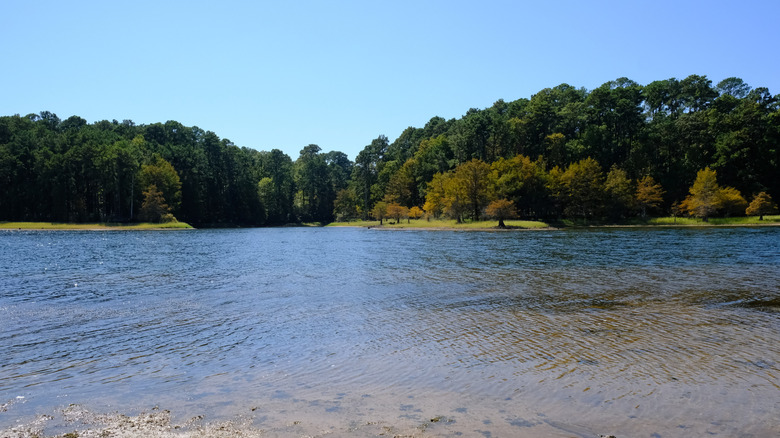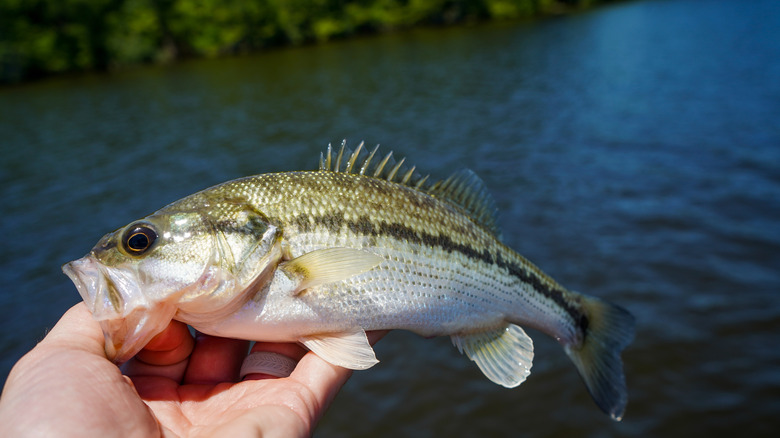The East Texas Woodlands Hide A Lush Wilderness With Old-Growth Forests, Rugged Hikes, And Rich Biodiversity
A 12,000-acre wilderness area in the heart of the East Texas woods protects a lush and remote old-growth forest that includes the largest remaining populations of American beech and southern magnolia trees found in any national forest in the United States. The Indian Mounds Wilderness Area, part of the larger Sabine National Forest, offers visitors the unique opportunity to take in the East Texas forest as it was before it was logged over and developed prior to 1930, largely by the turpentine industry. Today, the wilderness area, which is situated in far eastern Texas on the shores of the fabled Toledo Bend Reservoir — a bass-fishing paradise — protects the last remnants of the area's original forests. Visitors willing to put some miles on their shoe leather can go back in time and experience the "piney woods" as they were before the band saw changed their makeup forever.
Located about three hours by car north of Houston and its two airports, Indian Mounds Wilderness Area is home to the Indian Mounds Recreation Area on the banks of the reservoir, which makes it fairly easy to access this last stretch of protected wild forest in East Texas. The recreation area offers camping and picnic facilities, as well as restrooms and a boat launch on Toledo Bend Reservoir. The lake sits behind a dam on the Sabine River, and is a mecca for largemouth bass anglers. The closest city of any notable size is Lufkin, Texas' true hidden gem that's within driving distance of several major cities. It's about an hour and a half from Indian Mounds Recreation area.
A misnamed paradise for nature lovers
Indian Mounds Wilderness Area got its name from its unique hills that were once thought to be burial grounds for indigenous peoples who first lived in the area. But, as it was later learned, the mounds were actually created by natural geologic processes over time, and not by people. Regardless, the untamed country contained within the wilderness area offers visitors the chance to take in some genuine, untracked backcountry, a rarity in Texas, where only about 5% of its entire area is open to the public. Interestingly, there are no designated trails in the wilderness area. That said, visitors can access this untrammeled landscape via three roads that bisect the wilderness — South Bayou Road, Farm-to-Market Road 3382, and Butler Point Road. Texas State Highway 83 marks the northern boundary of Indian Mounds Wilderness Area. There are also some abandoned roads and a pipeline corridor that hikers and equestrians can use to access the area. Farm-to-Market Road 115 — also known as Bayou Road, crosses the pipeline corridor about two miles south of Farm-to-Market Road 83. Here, there's a half-mile trail that leads to Hurricane Bayou, which is draped in ferns and overhanging southern magnolias.
For campers visiting the area, the best place to pitch a tent or park the RV is at the Indian Mounds Recreation Area. Here, guests will find 37 total campsites, several picnic sites, outdoor charcoal grills and portable toilets. For anglers, the recreation site offers a pair of boat ramps on Toledo Bend Reservoir, which is the American South's largest artificial body of water, and a legit destination for trophy bass anglers.
One of the best bass lakes in America
Toledo Bend Reservoir not only provides boat access to some of the more remote reaches of Indian Mounds Wilderness Area, it's also a storied bass-fishing destination. From 2015 to 2017, Toledo Bend was named by Bassmaster Magazine as the best bass lake in America. That's not terribly surprising — the biggest bass landed from Toledo Bend is 15.67 pounds, and more nearly 140 "lunkers" (bass over 10 pounds) have reportedly been caught from Toledo Bend Reservoir. The reservoir rivals Lake Eufaula in Alabama, a true Southern gem known as the big bass capital of the world.
Toledo Bend boasts nearly more than 200,000 surface acres, making it the ninth-largest man-made reservoir in America. In addition to its highly prized largemouth bass, the lake is also home to crappie, catfish and both white and striped bass. It's also home to massive non-game fish, like smallmouth buffalo (a 46-pounder was caught from the lake in 1992), and massive alligator gar. The largest gar recorded was caught in 2017 and weighed a whopping 86 pounds. So, in addition to being the eastern boundary of Indian Mounds Wilderness Area, Toledo Bend Reservoir is a remarkable place for anglers of all stripes. In all, this wild corner of Texas is ideal or nature lovers and anglers looking for an unspoiled outdoor opportunity, and there may be no better place in the state where they'll find it.


